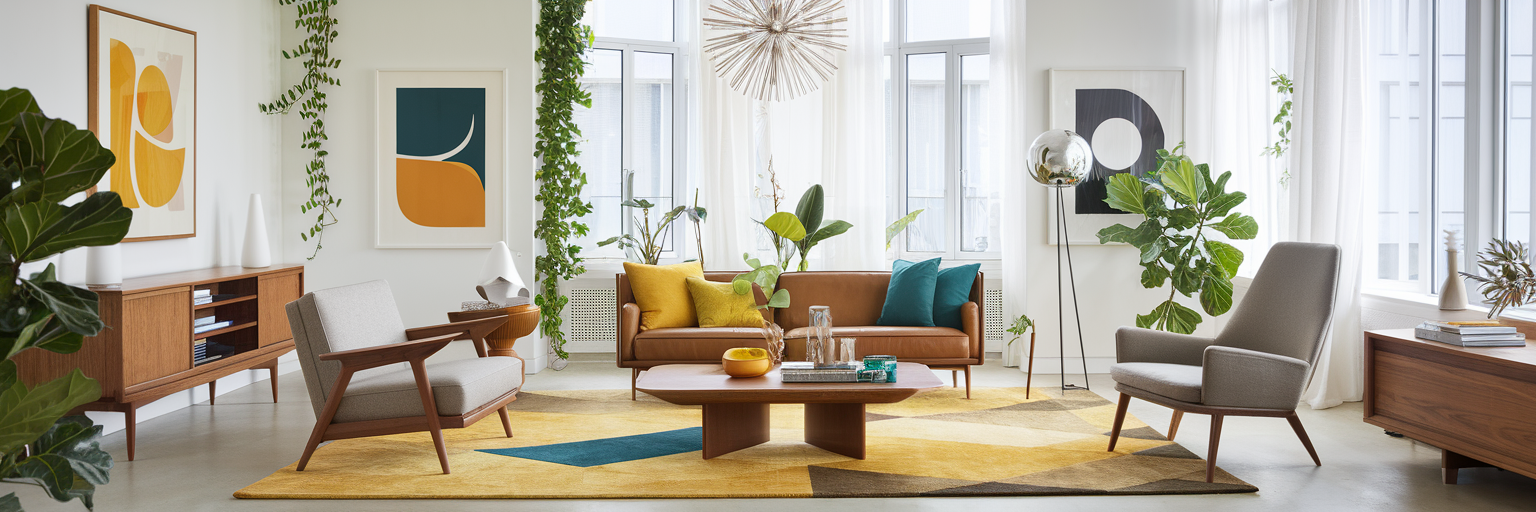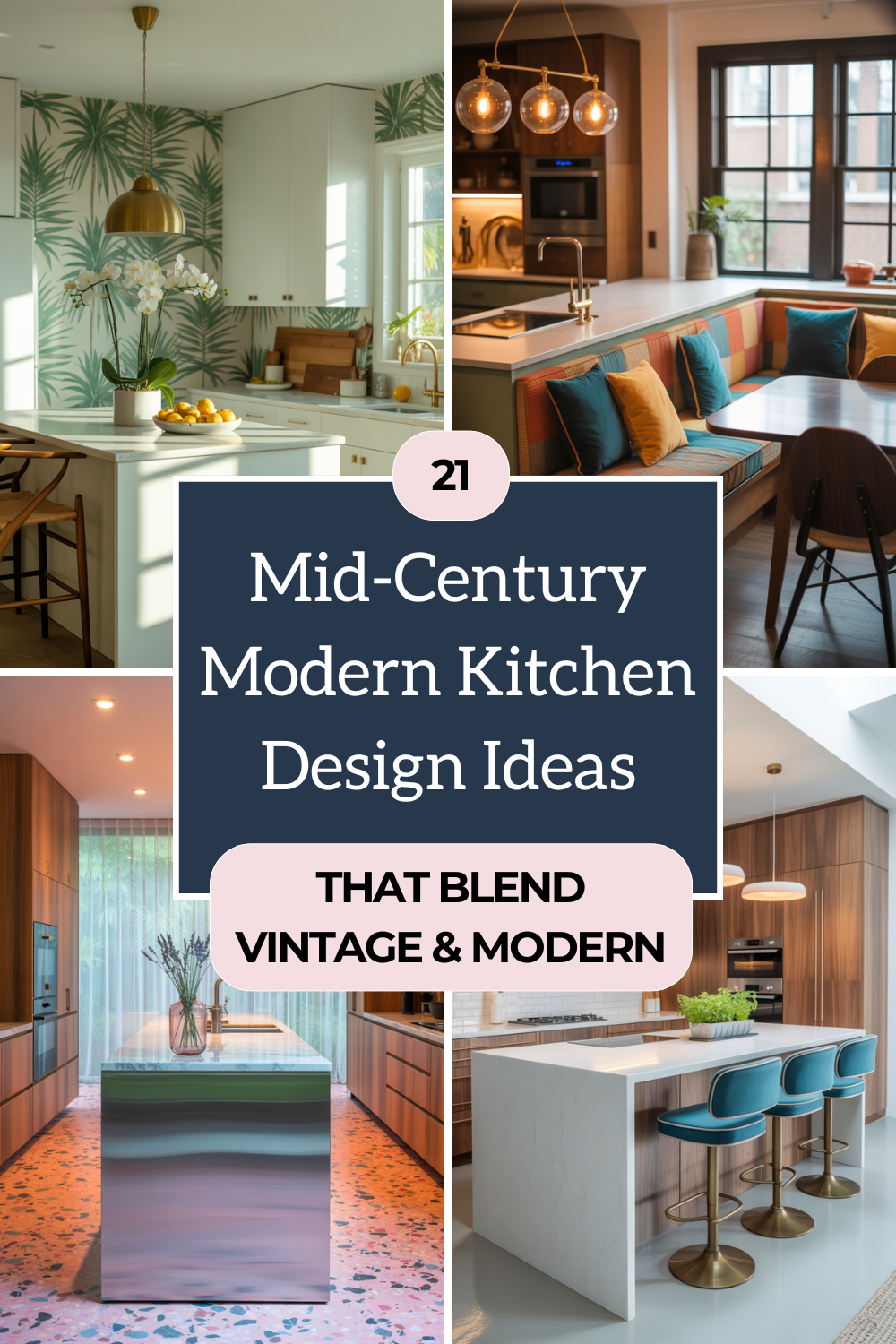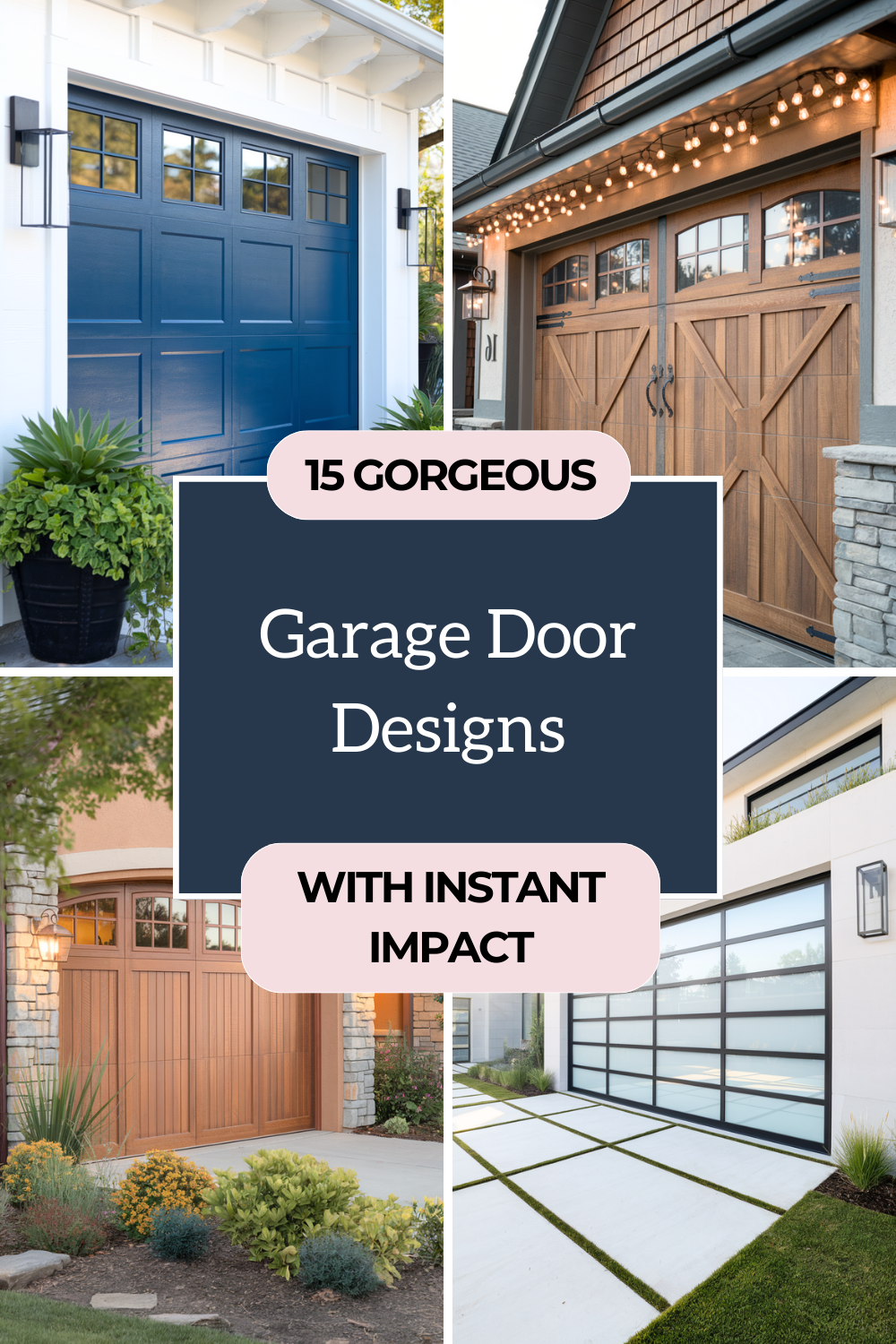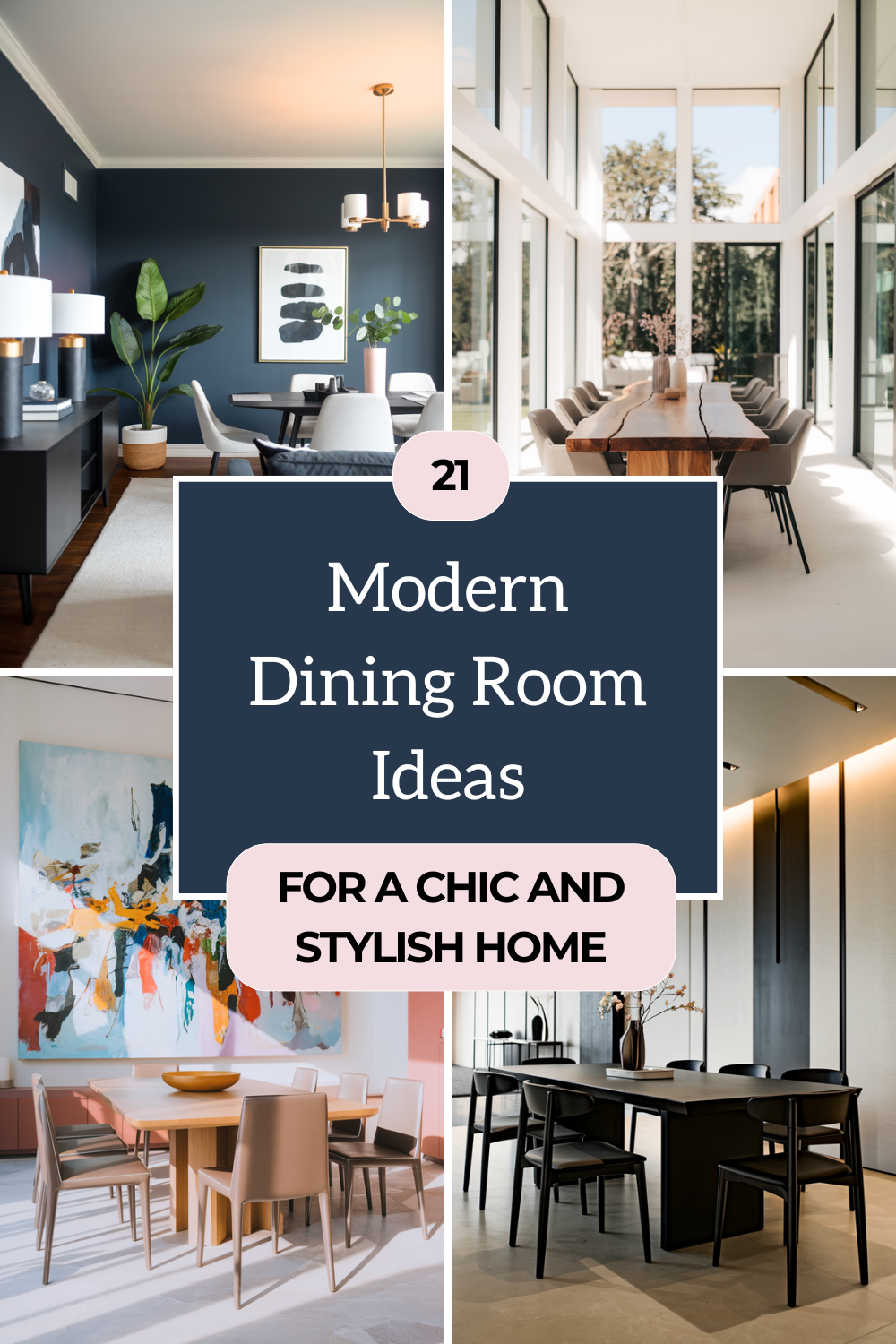
Mid-Century Modern
If you’ve ever caught yourself pausing an episode of Mad Men just to admire the set design (in addition to the dashing Don Draper, of course), or if you’ve found yourself drawn to walnut wood finishes, tapered legs, and earthy color palettes while scrolling through Pinterest, there’s a good chance you’re already in love with mid-century modern style. It’s one of those timeless aesthetics that feels equal parts retro and refreshingly current, which is probably why it’s so beloved in the design world—and honestly, why I’m pretty enamored with it, too. Whether you’re decorating your first apartment, revamping a tired room, or just curious about dipping your toe into this classic style, this guide will walk you through exactly how to start. No design degree needed—just a little curiosity and a love of clean, cozy, well-thought-out spaces that have come to define the perfect mid-century modern home.
Start with iconic silhouettes
When I think of mid-century modern, the first thing that comes to mind is the furniture. More specifically, those beautiful, sculptural pieces that look like art but are made to be lived in. If you want to ease into the look, furniture is the best place to start. Look for clean lines, gentle curves, and a strong sense of proportion. You’ll often see low-profile sofas with wooden legs that angle outward, credenzas that seem to float off the floor, or armchairs that cradle your body just right without being oversized.
If you’re new to the style, begin with one or two standout pieces—maybe a sleek media console, a mid-century-inspired dining table, or a timeless lounge chair. These items set the tone for the rest of your space and can act as anchors while you build out the room over time. You don’t need to fill your space all at once. In fact, letting it evolve slowly tends to result in a more authentic, collected look.

Simple color palette, with room for a pop
Mid-century color palettes are both soothing and playful. They usually start with earthy, warm tones—think creams, tans, muted greens, and soft greys. Then they add in a bit of boldness: a mustard yellow pillow here, a deep teal chair there, or maybe even a brick red piece of art.
What I love about this approach is that it lets you keep things calm and cohesive while still letting your personality shine. If you’re someone who’s not super comfortable with color, this is a great way to ease into it. Start with a neutral base—maybe a beige sofa and white walls—then bring in a few accent colors in your throw pillows, artwork, or even a fun lamp.
This way, your space always feels balanced, but never boring.

Warm wood tones
If you ask me, no mid-century space is complete without some gorgeous wood accents. I’m talking walnut, teak, and oak—those rich, golden or chocolatey finishes that instantly warm up a room. Whether it’s a credenza in your dining room or a simple wood-framed mirror by the front door, these pieces have a way of grounding the space and giving it that unmistakable mid-century feel.
You don’t need to redo your floors or invest in an expensive vintage dresser (although, if you find one you love, go for it!). Even small touches can help—like a wooden picture frame, a plant stand, or a bookshelf. And if you’re mixing different types of wood, don’t stress too much. Mid-century spaces aren’t overly matchy-matchy—they’re layered and lived-in.

Minimal but meaningful decor
One of the things that makes mid-century modern interiors feel so peaceful is how uncluttered they are. But that doesn’t mean they’re bare. The trick is to decorate with intention. Choose pieces that you love, that tell a story, or that make you smile every time you see them. It could be a sculptural ceramic vase, a hand-me-down record player, or a piece of abstract art that you picked up at a local market.
Instead of filling every wall or surface, leave a little breathing room. Negative space is your friend here—it lets each item shine. I like to think of it as curating your space rather than decorating it. Take your time collecting pieces that really feel like you.

Mix vintage and new for balance
Mid-century modern style has been around for decades, so it only makes sense that you’d find it in both vintage and brand-new pieces. I personally love blending the two. There’s something really satisfying about scoring a one-of-a-kind vintage dresser and pairing it with a crisp, modern light fixture. It creates this layered look that feels authentic, not staged.
Check out local thrift shops, antique stores, or even online marketplaces. You’d be surprised how many treasures are out there just waiting for a second life. And don’t worry if something has a little wear—it adds character. Pair your vintage finds with newer pieces from places like West Elm or Article to keep your space feeling fresh.

Geometric patterns
Patterns play a big role in bringing mid-century spaces to life, but you’ll notice they’re never overwhelming. Instead of loud florals or busy prints, think about simple geometric shapes—triangles, circles, arches, and starbursts. These can show up in all kinds of places: throw pillows, rugs, curtains, wallpaper, or artwork.
The key is to use them thoughtfully. You might choose a bold, geometric area rug as your statement piece, then keep everything else more toned down. Or you could add a few patterned cushions to your sofa for a subtle nod to the style. These shapes add visual interest and tie everything together without stealing the spotlight.

Lighting that makes a statement
Ah, lighting. I love it so. Lighting is one of those elements that can really define a mid-century modern space, and honestly, it’s one of my favorite ways to change the mood of a room. Classic fixtures like sputnik chandeliers, globe pendants, or brass arc lamps don’t just light up your space—they act like sculptural art pieces, too.
If you’re not ready to commit to a full ceiling fixture, try adding a floor lamp or table lamp in a retro silhouette. Look for materials like brushed brass, matte black, or frosted glass. Good lighting is functional, but in mid-century design, it’s also just plain beautiful. It’s the finishing touch that can make a room feel pulled together.

Prioritize layout and functionality
Mid-century modern design is all about form meeting function. The furniture isn’t just beautiful—it’s meant to be used. That means layouts that are practical, with furniture that makes sense for how you live. If your living room feels cramped or awkward, try floating your sofa in the middle of the room instead of pushing everything against the walls. Or swap out a bulky bookshelf for one that’s more open and airy.
The goal is to create a space that’s open, livable, and inviting. Leave enough space to move around comfortably, and don’t be afraid to rearrange things until it feels right. Your home should work for you—not the other way around.

Layer different textures
Mid-century spaces may be minimalist in form, but they’re anything but flat. One of the best ways to make your space feel rich and cozy is by layering textures. Think about the combination of smooth wood, soft wool, woven rattan, cool metal, and supple leather—all in one room. That’s where the magic happens.
Try pairing a leather armchair with a wool throw and a jute rug. Or place a velvet cushion on a wooden bench. Mixing textures adds depth and warmth, and it makes your home feel thoughtfully curated rather than one-note.

Greenery to bring it all to life
Plants are a must in any mid-century inspired space. Back in the 50s and 60s, indoor plants were everywhere—and for good reason. They add a natural element that softens all the clean lines and hard surfaces, and they instantly make a room feel more alive.
You don’t need to go overboard. A couple of well-placed plants in ceramic or wooden planters can do the trick. Look for low-maintenance options like snake plants, rubber trees, or ZZ plants if you’re new to plant care. And don’t forget to place them in those charming mid-century plant stands—they’re half the fun.
More Ideas
The most beautiful mid-century inspired homes I’ve seen are the ones where the homeowner adds their own twist, whether that’s a quirky gallery wall, a collection of vintage books, or a brightly colored accent chair that bucks the usual palette. Start with the basics—those clean lines, warm woods, and timeless silhouettes—but give yourself the freedom to play. Let your space evolve, trust your gut, and most importantly, create a retro-inspired space you love coming back to.



